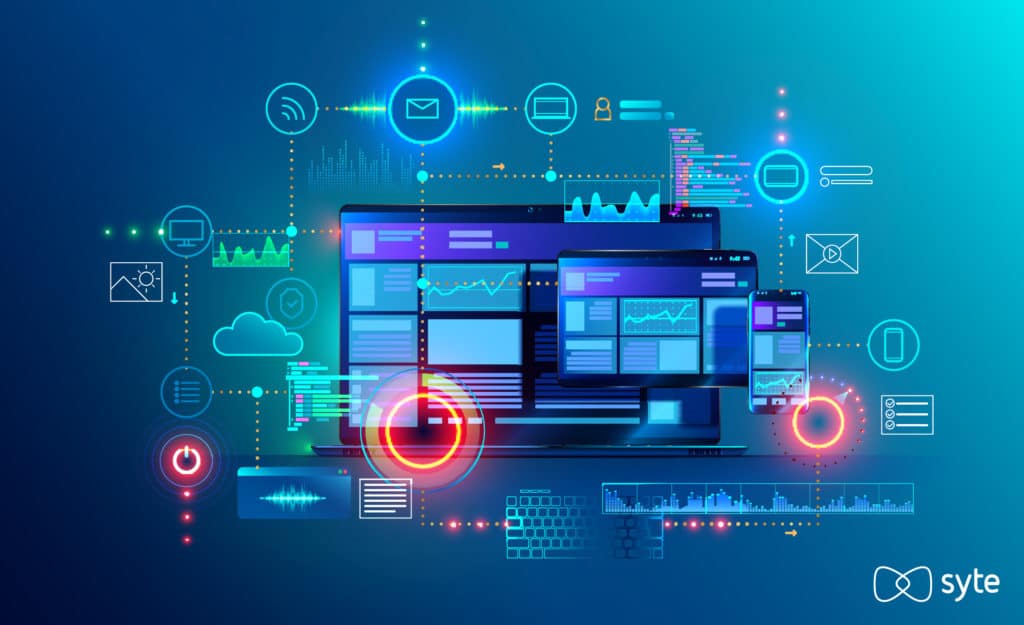A tech stack is the set of technologies used by companies to build and run a website, application, or project. The term was coined from the notion that multiple technological solutions are layered or “stacked” on top of one another to eventually create a fully functioning system. Also called a solutions stack, a tech stack usually includes frameworks, frontend and backend tools, programming languages, a database, and applications linked together via APIs.
Investing in the right combination of solutions for your eCommerce tech stack is important to reach business goals and enable success for your brand. Having a well-functioning and effective tech stack helps you to achieve a higher ROI, increase revenue, and deliver online shopping experiences that meet and exceed customer expectations.
The Different Components of an eCommerce Tech Stack

A tech stack is composed of two main parts:
- The frontend is the client-facing set of tools that developers use to ensure that the shopping experience on your site is in tip top shape. The common frontend components are HTML, CSS, and JavaScript.
- The backend is the server-facing combination of tools that support the inner workings of your site. Backend technologies usually include programming languages, frameworks, databases, and servers.
Other categories that could be included are:
- API services that allow you to connect every tool in your system.
- Monitoring and evaluation tools that enable you to track, review, and optimize the health and performance of each layer of your tech stack.
- Business intelligence that brings together and analyzes data from multiple parts of your brand and the market in order to make high-level business decisions.
- Behavioral and product analytics tools that provide insights into the user behavior at every stage of the customer journey.
What to Consider When Building a Tech Stack for eCommerce
There’s no shortage of eCommerce solutions in the market, but choosing the right number and mix of tools is a crucial process that requires careful consideration to prevent losses and set your brand up for success.
Here are the common questions you should consider when you build, modify, and maintain your eCommerce tech stack:
- Is the tool compatible with your existing technologies?
- Does it address your business and customer needs?
- Do you plan to scale in the future?
- What is your end-to-end budget from hardware and development to training and ongoing maintenance?
- What is your timeline?
- Is the solution secure?
- Have you done due diligence about the provider from industry recognition to feedback from past and existing clients?
- Does your team have the experience to adopt, implement, and modify for future needs?
It’s important to note that because there are so many tools available, tech bloat has become an increasing issue among eCommerce brands. This makes it critical to have a comprehensive view of your tech stack. There are times when it makes more sense to replatform, than to add another layer of solutions especially when your current system is no longer working for you.